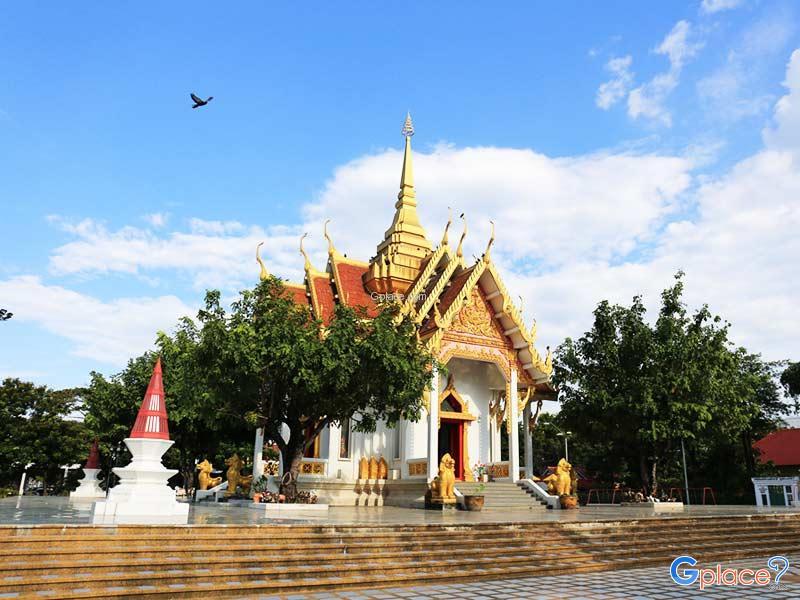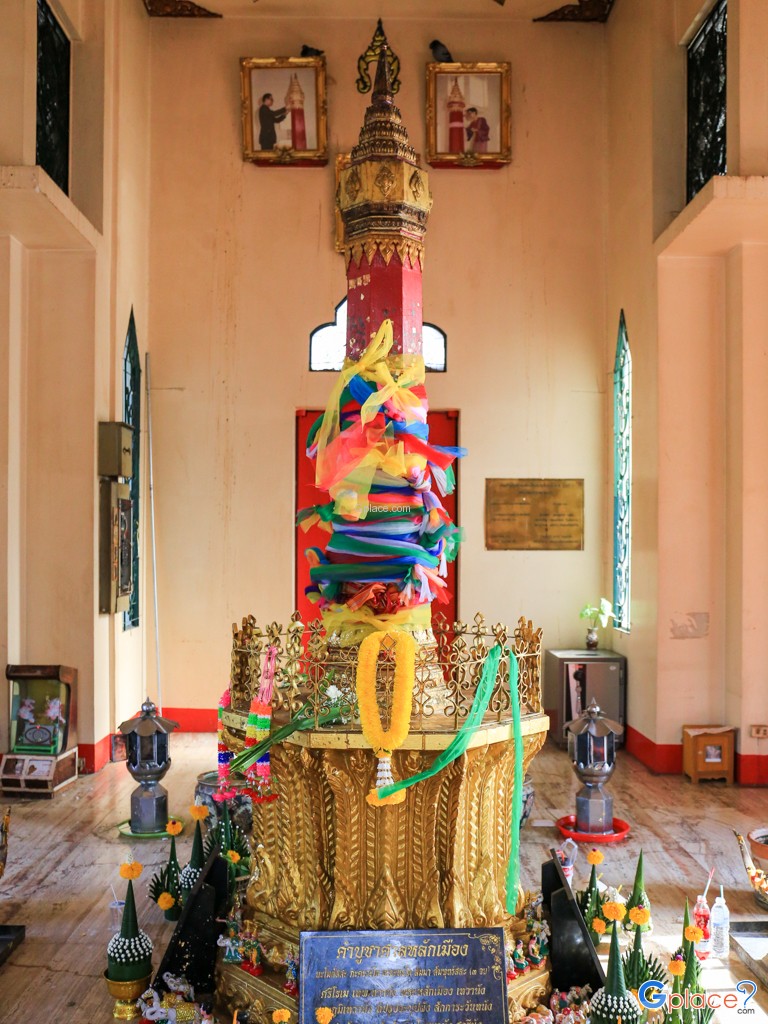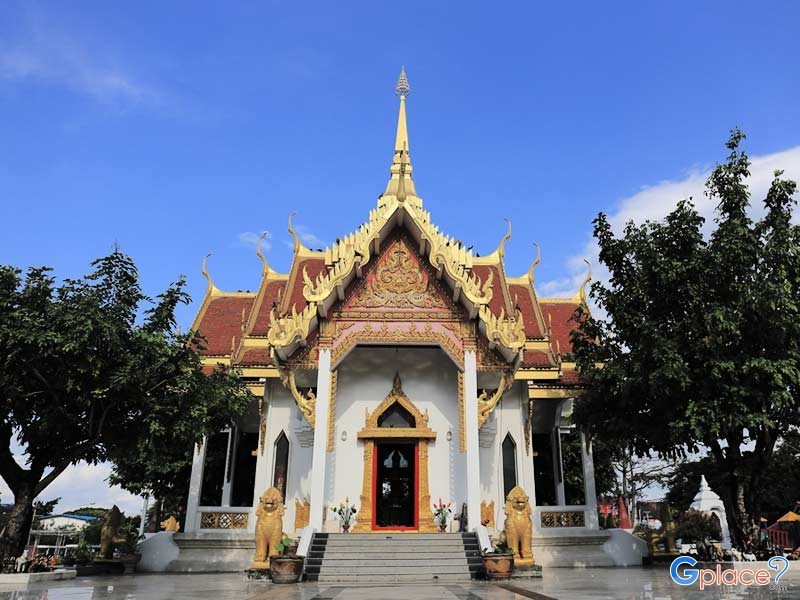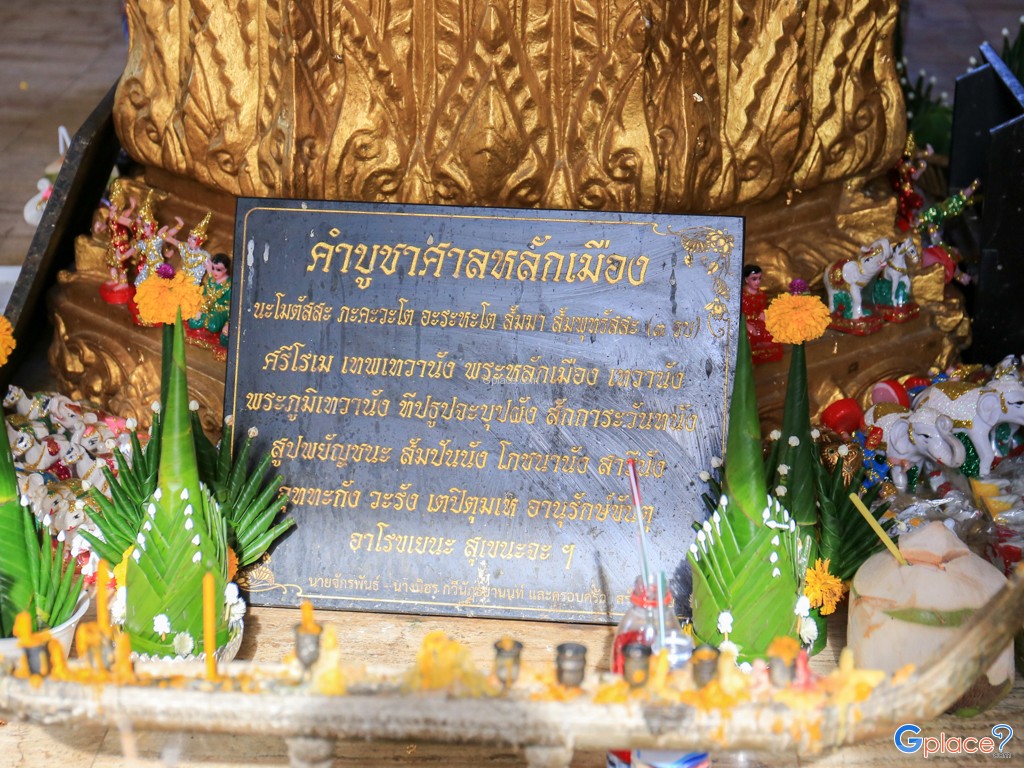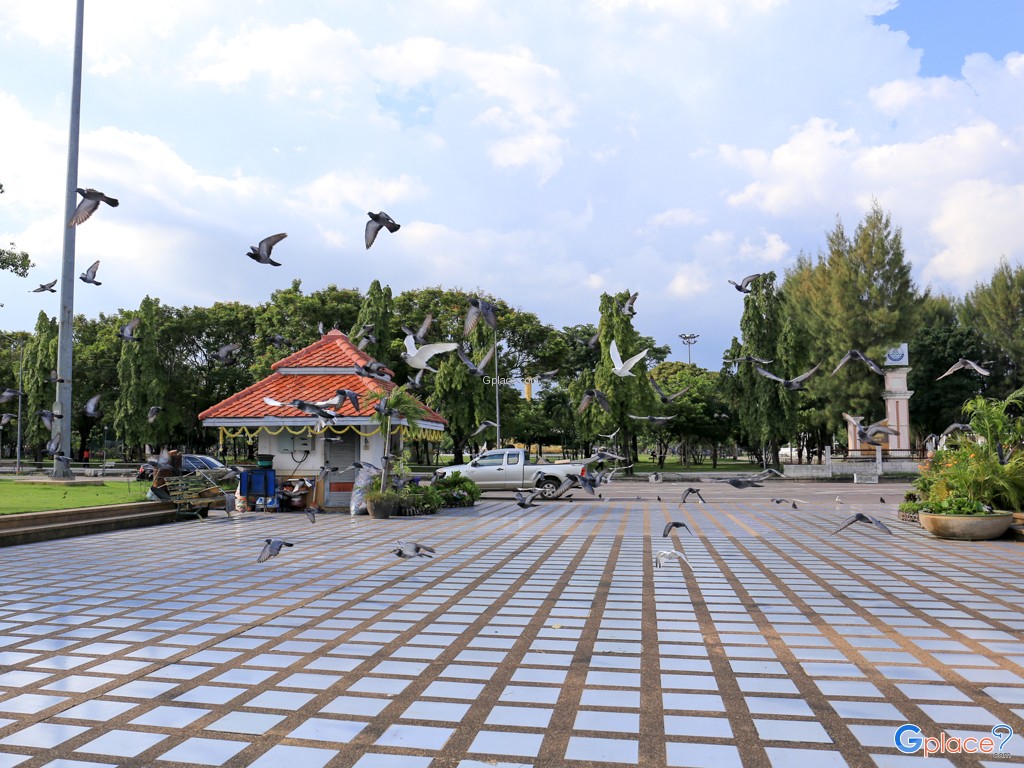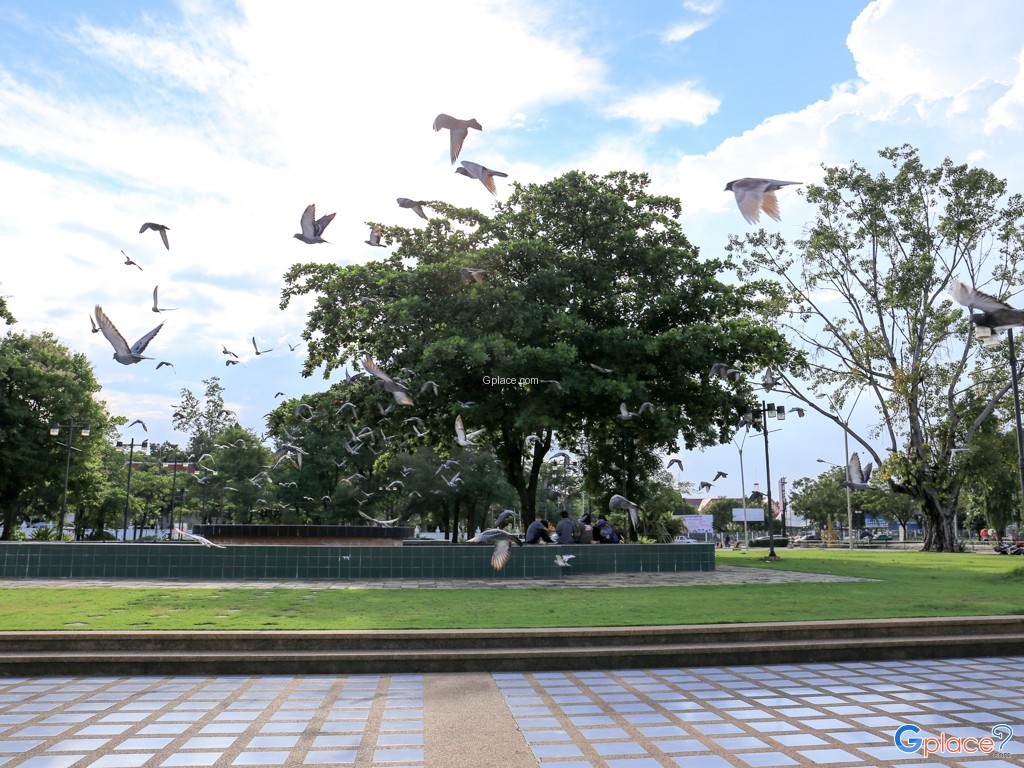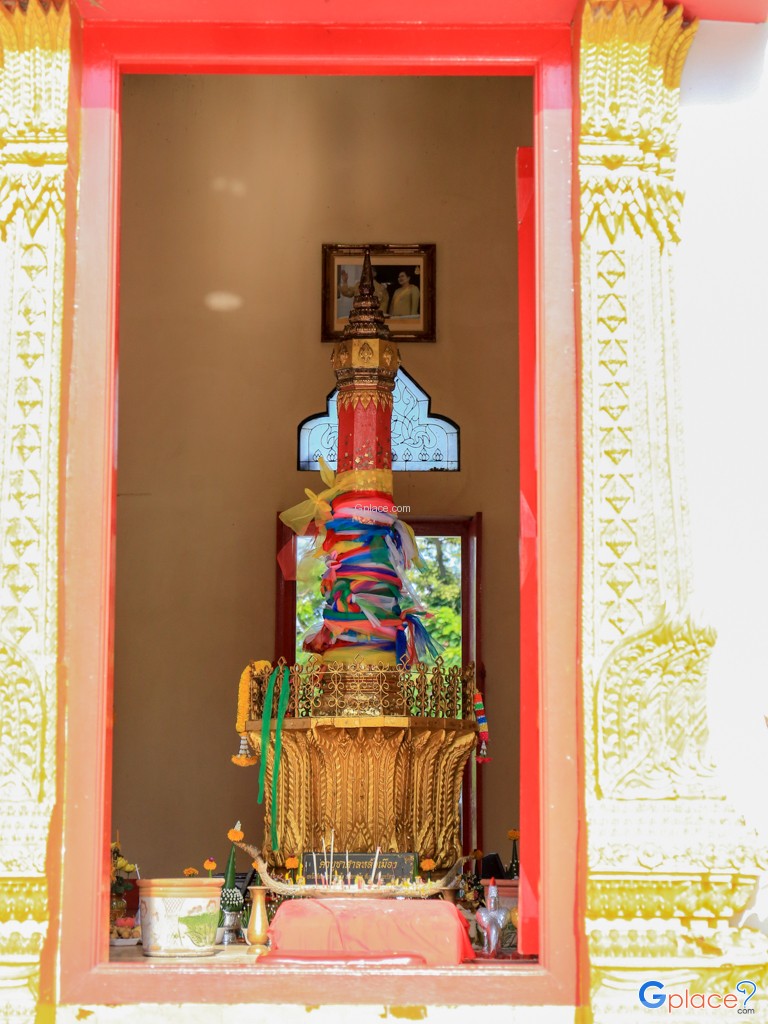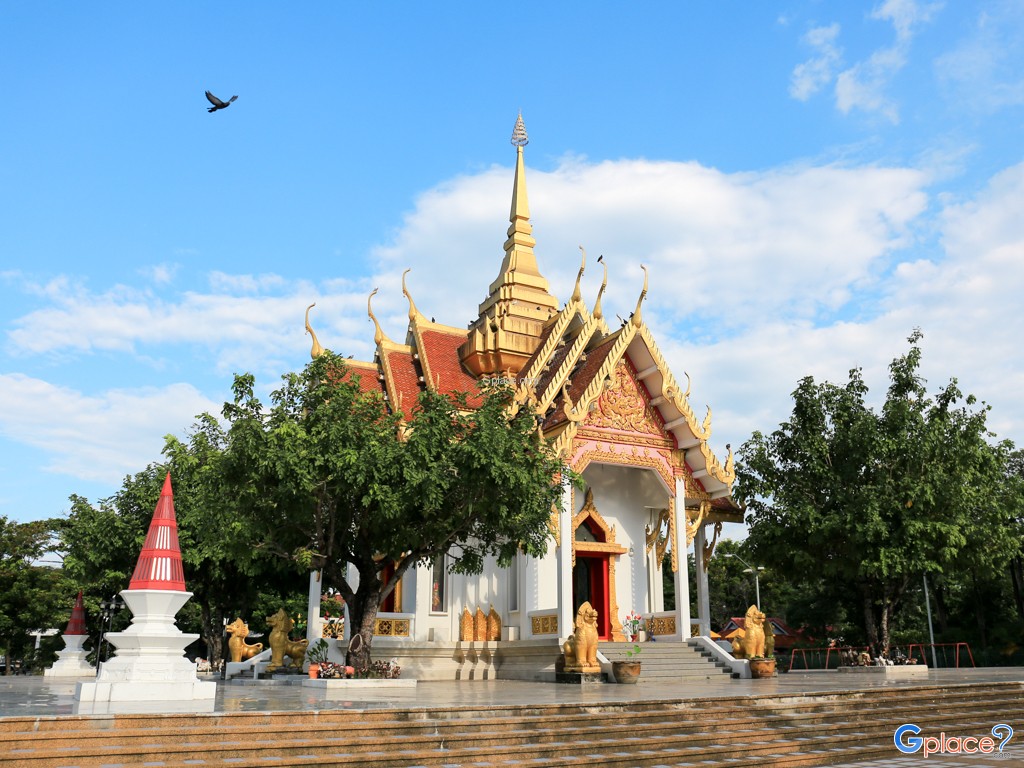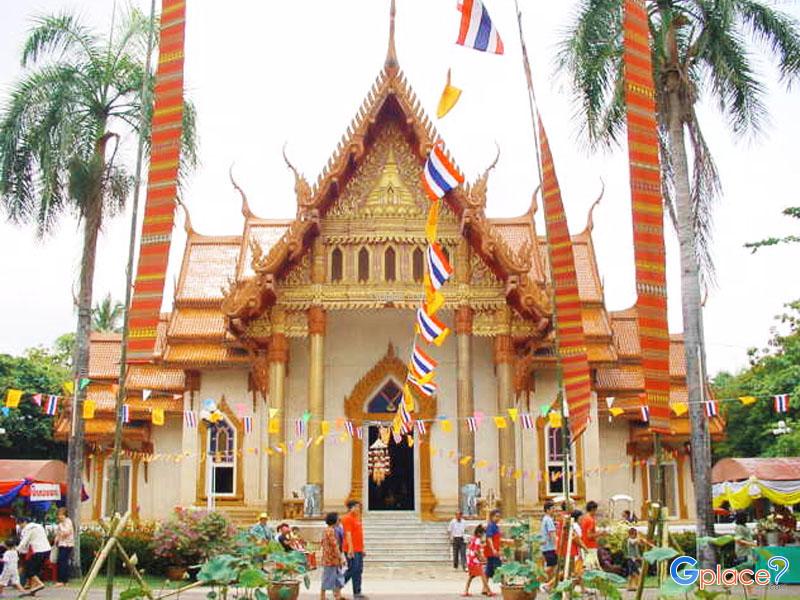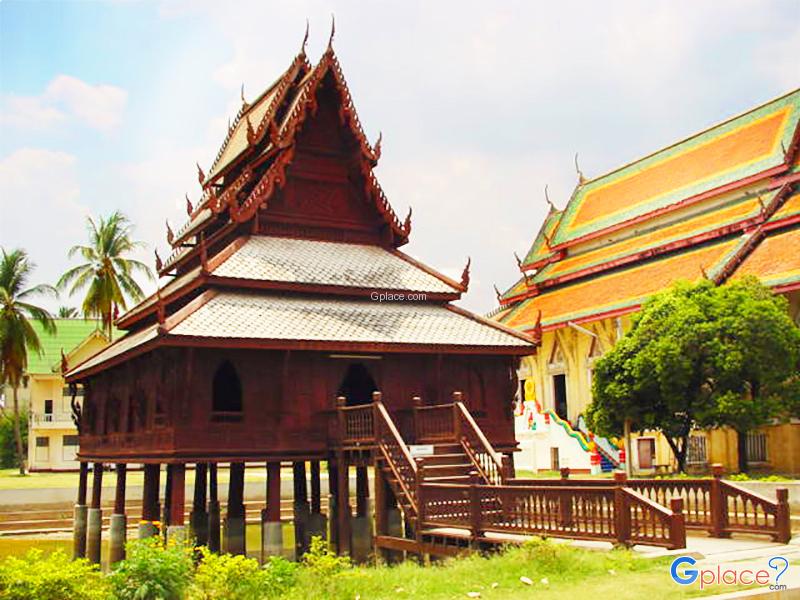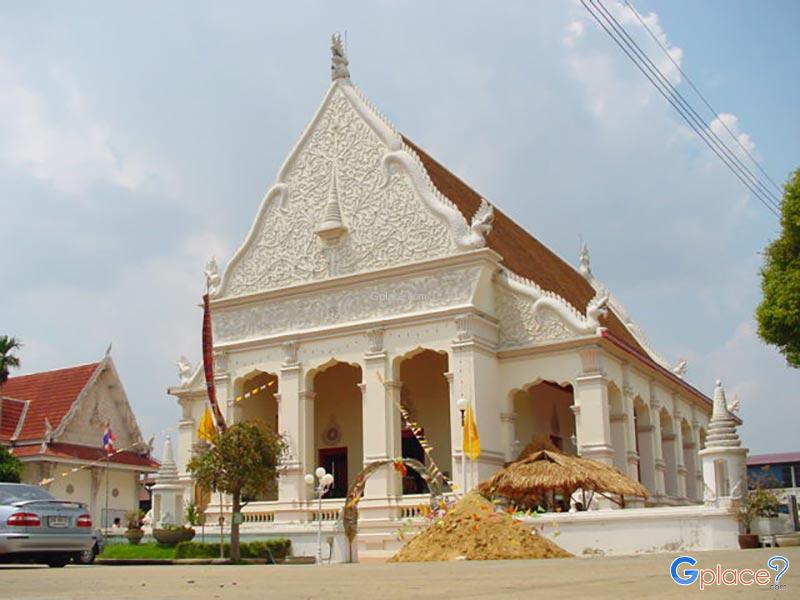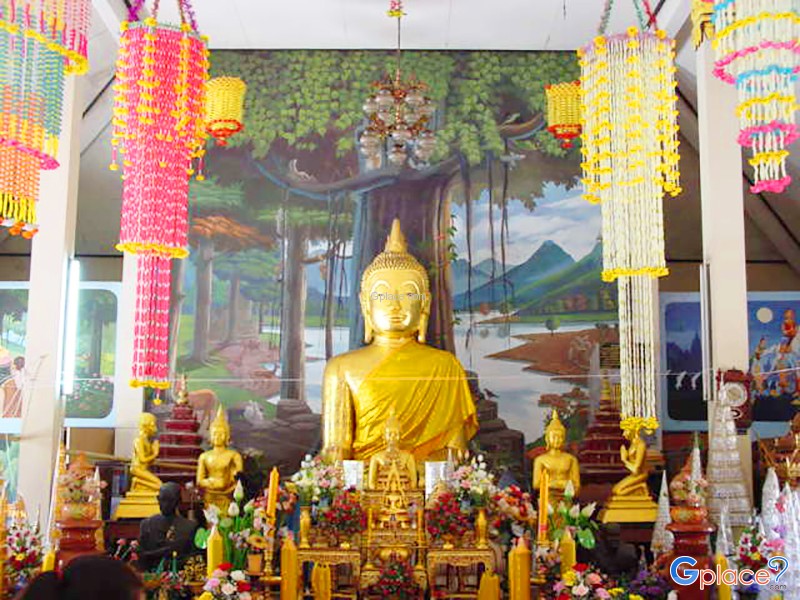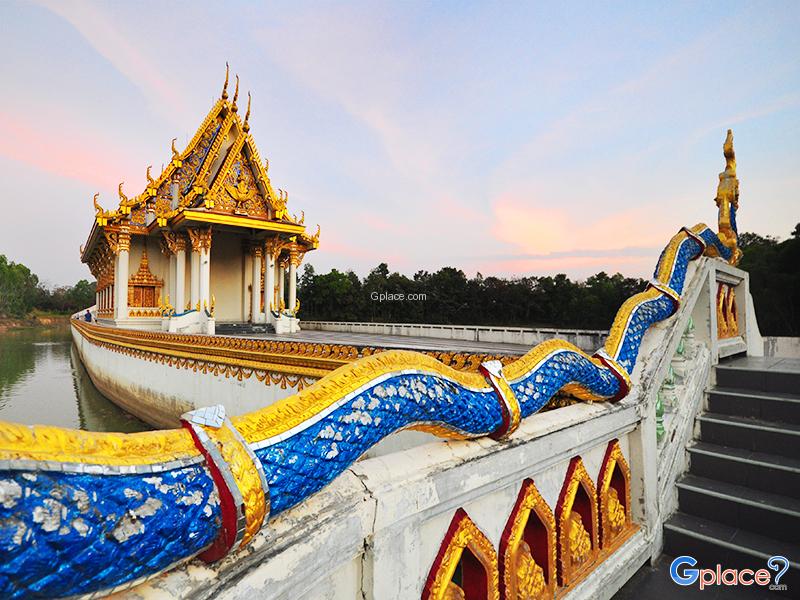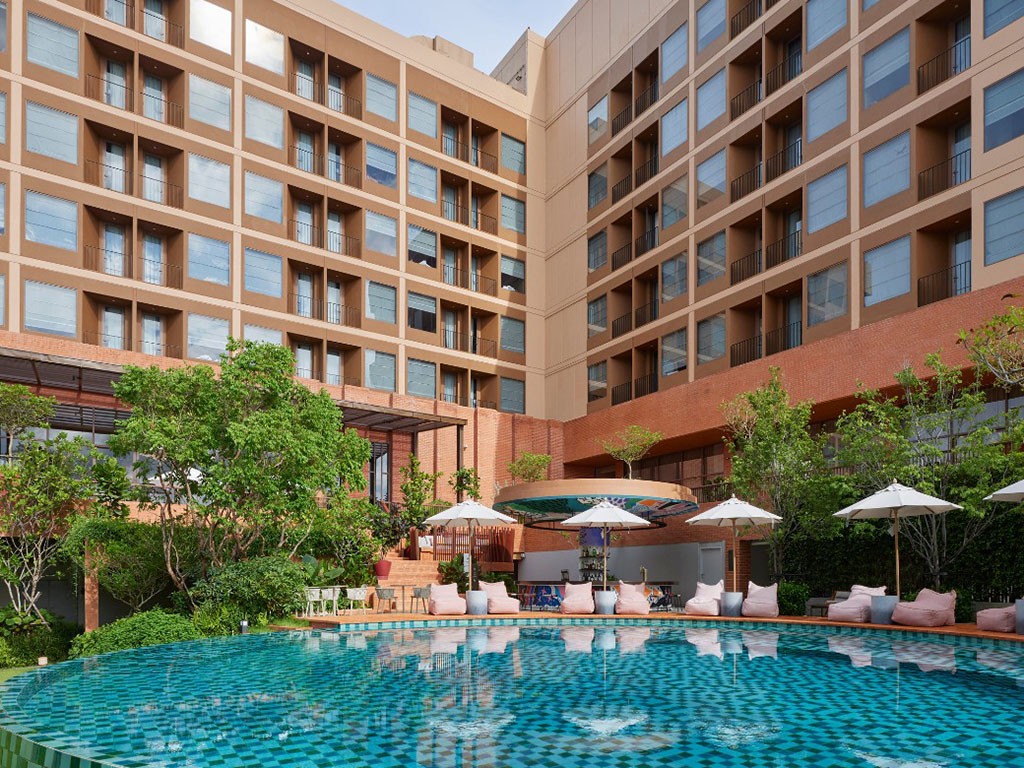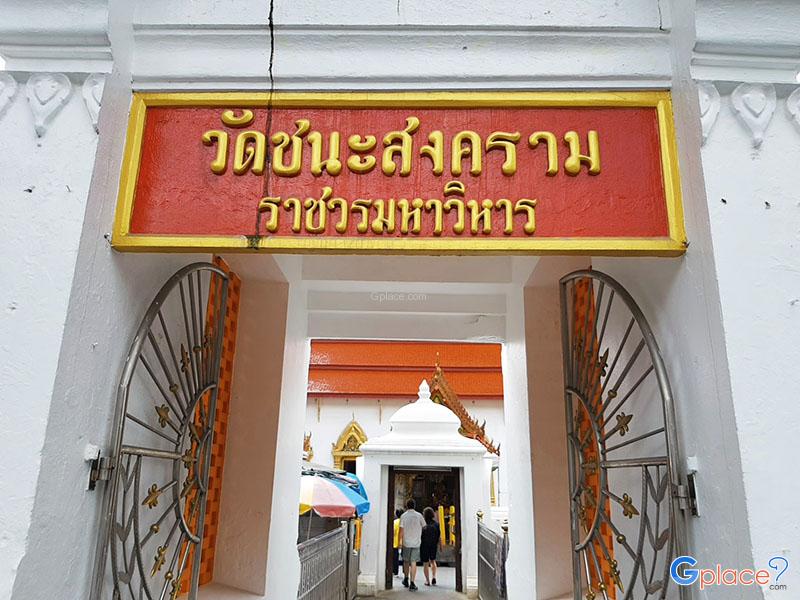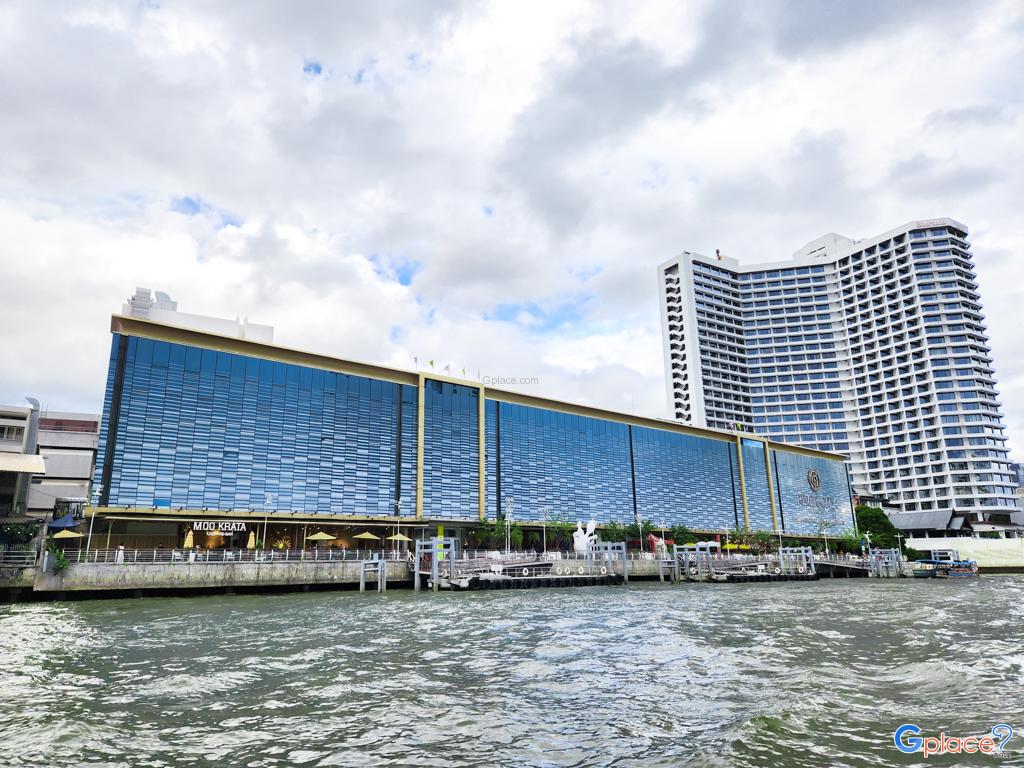“Features a lotus bud-shaped pillar made of gilded Ratchaphruek wood, wrapped in tri-colored cloth, and honored annually in a traditional ceremony on the 1st waxing moon of the 7th lunar month.”
The Ubon Ratchathani City Pillar Shrine is located just south of Thung Si Mueang and north of the Ubon Ratchathani National Museum. Unlike many other provinces, Ubon did not originally have a city pillar. In 1972, Governor Police Major General Wichian Srimantra consulted with Somdet Phra Maha Viravong to initiate its construction as a sacred and unifying site for local citizens. The cornerstone was laid on August 27, 1972, with Somdet Phra Maha Viravong himself choosing the auspicious time and presiding over the ceremony.
The pillar was designed by the Fine Arts Department and crafted from Ratchaphruek wood. Its shape resembles a lotus bud and is adorned with gold leaf and ceremonial tri-colored cloth. Upon completion, Governor Dejchat Wongkomonchet invited King Rama IX, Queen Sirikit, and the Crown Prince to officially inaugurate the shrine on January 16, 1976.
The shrine itself is built in a traditional Thai pavilion style, with four gabled entrances. In addition to the city pillar, the site features revered statues of prominent monks including Phra Ubali Khunupamajarn (Sirichan) and Somdet Phra Maha Viravong. These additions further cement the site's cultural and spiritual significance.
Annually, on the 1st waxing moon of the 7th lunar month (typically in April or May), the city holds a ceremonial homage known locally as "Samha." Residents gather to offer marigolds, incense, candles, garlands, and colorful cloths in a time-honored rite believed to bring blessings and stability to the city. The shrine is surrounded by a garden and peaceful walking paths, serving both religious and recreational purposes.
How to Get There
-
Walk from Thung Si Mueang for about 2–3 minutes (200–300 meters)
-
Take a songthaew (local minibus) or taxi from the city center, 5–10 minutes
-
Bicycles and tuk-tuks are also convenient transportation options
Travel Tips
-
Dress respectfully as the shrine is a sacred space
-
Morning visits are recommended for a more peaceful atmosphere
-
Arrive early if planning to attend the annual ceremonial event
-
Photography is allowed outside, but avoid obstructing rituals
Admission Fee: Free
Opening Time: Open 24 hours

















